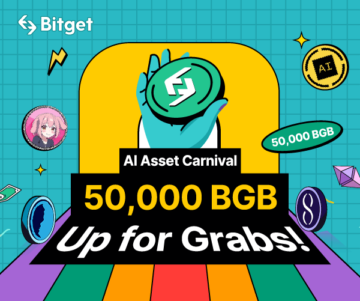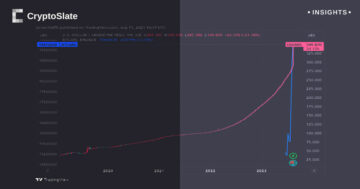In this ever-evolving digital world, we don’t sit at our laptops and marvel at how electricity is an incredible technology. We often take the seamless function of our technologies for granted. When reading this article, you’re not thinking about the server it is hosted on or that it is structured by HTML. We’ve grown accustomed to these marvels, and rarely reflect the underlying technology that propels our daily lives.
Most of us are content with technology that seamlessly blends into the background. This perspective also extends to the realm of gaming. Gamers are primarily concerned with functionality and ease of use.
The gaming community holds a skeptical stance regarding mainstream gaming companies attempting to integrate aspects of Web3. EA received backlash in November 2021 for discussing their Web3 intentions, and other high-profile game companies such as Microsoft, Valve and Epic Games are staying out of the battle completely, refusing to embrace NFTs in games.
Do What We Do Best: BUILD
If Web3 gaming is to be a success, we need to bridge the gap and win over Web2 audiences. NFTs lack intrinsic value for many gamers, and not everyone values digital ownership. Many gaming studios attempt to integrate NFTs superficially, resulting in NFTs that exist in name-only, offering players minimal control in secondary markets. This often feels like a mere dressing-up of microtransactions, driven by corporate boards capitalizing on the trend without grasping blockchain’s unique essence.
We must stop shouting about the technical structures of Web3 gaming and focus our conversations on enhancing the user experience. Ultimately, users are less concerned about whether a game operates on or off-chain; what truly matters is that the games are built to be easy to use and enjoyable to play. Whether it’s gaming or Web3, users’ primary concern is the experience they encounter while navigating any given platform.
Whether it’s purchasing their first NFT or setting up a wallet, the catalyst for their engagement is the presence of a well-designed, user-friendly application that facilitates actions seamlessly.
If users are confronted with a range of buggy, poorly designed apps that fail to match the quality they’re accustomed to, they’re more likely to reject the entire concept altogether. Finding balance with Web3 gaming in this aspect is key; if a developer decides to incorporate NFTs, they should be used to enhance the user experience without overwhelming the core gameplay.
Financialization Is Not A Dirty Word
Overall, the ‘financialization’ of games is not a bad thing. Curiously, when we mention Web3 or crypto games, financialization often gets painted negatively. It is often forgotten that the film and music industry, put together, still falls short of the gaming industry’s vast earnings. Financialization is, in fact, an inherent part of gaming. Recent statistics and forecasts for the industry suggest an astounding leap in revenue from $282 billion in 2023 to a staggering $666 billion by 2030. A big portion of the gaming industry comprises of secondary market of in-game assets that lies in a legal grey area, often on third-party sites.
While game developers have made some legitimate attempts to host their own in-game secondary marketplaces, most publishers refrain from doing so. This is primarily because of higher margins on primary sales and to incentivize users to monetize the game’s in-built design and progression.
Lack of legit secondary trading options leads to a big gray market from the dark web, to non-resident platforms. With Blockchain, we give users a legitimate way to trade assets, versus going to the internet’s dark corners.
Focus on Community
Another crucial factor to consider is the role of strategic gameplay, rather than solely relying on ‘luck-based’ mechanics. This element is sure to play a pivotal role in captivating Web2 audiences who invest their money, valuable time, and energy. When users commit their time and cognitive effort to strategizing gameplay, and forming vibrant communities to discuss resource management, NFTs, assets, and tactical moves, a genuine gaming culture begins to flourish.
The combination of control, participation, and passion that players exhibit shapes the trajectory of these projects. A strong community is a cornerstone for a game’s sustainability and long-term growth.
To attract the gaming audiences, we must address the major factors that anchor users to traditional games; rich gameplay and incentives. While the financial aspect is undeniably central to the Web3 space, it’s equally essential to enhance the richness of gameplay with better UI and UX, so it naturally becomes the right game for them to try out.
There will always be purists who hesitate to embrace Web3 products, perhaps the late adopters, but there will be gamers who will value rich gameplay and now have a legitimate platform to trade and utilize their game NFTs. These enthusiasts will likely be the earliest champions of genuinely enjoyable and engaging Web3 games.
As an industry, we must build delightful products and not scare away our audience. Web3 infrastructure is not there yet to support a massive ecosystem, so in lieu of this, let’s build great games that people love while using the components of Web3 that enable a fair system of ownership and trade of game assets.
- SEO Powered Content & PR Distribution. Get Amplified Today.
- PlatoData.Network Vertical Generative Ai. Empower Yourself. Access Here.
- PlatoAiStream. Web3 Intelligence. Knowledge Amplified. Access Here.
- PlatoESG. Carbon, CleanTech, Energy, Environment, Solar, Waste Management. Access Here.
- PlatoHealth. Biotech and Clinical Trials Intelligence. Access Here.
- Source: https://cryptoslate.com/op-ed-web3-gaming-will-get-an-audience-when-we-stop-talking-about-web3/
- :is
- :not
- $UP
- 2021
- 2023
- 500
- a
- About
- actions
- address
- adopters
- also
- altogether
- always
- an
- Anchor
- and
- any
- Application
- apps
- ARE
- AREA
- article
- AS
- aspect
- aspects
- Assets
- astounding
- At
- attempt
- attempting
- Attempts
- attract
- audience
- audiences
- away
- background
- Bad
- Balance
- Battle
- BE
- because
- becomes
- BEST
- Better
- Big
- Billion
- blends
- blockchain
- BRIDGE
- build
- built
- but
- by
- capitalizing
- captivating
- Catalyst
- central
- Champions
- cognitive
- combination
- commit
- Communities
- community
- Companies
- completely
- components
- comprises
- concept
- Concern
- concerned
- Consider
- content
- control
- conversations
- Core
- corners
- cornerstone
- Corporate
- crucial
- crypto
- crypto games
- CryptoSlate
- Culture
- daily
- Dark
- Dark Web
- delightful
- Design
- designed
- Developer
- developers
- digital
- digital ownership
- digital world
- discuss
- discussing
- do
- doing
- Dont
- driven
- EA
- earliest
- Earnings
- ease
- ease of use
- easy
- ecosystem
- effort
- electricity
- element
- embrace
- enable
- encounter
- energy
- engagement
- engaging
- enhance
- enhancing
- enjoyable
- enthusiasts
- Entire
- EPIC
- Epic Games
- equally
- essence
- essential
- everyone
- exhibit
- exist
- experience
- extends
- facilitates
- fact
- factor
- factors
- FAIL
- fair
- Falls
- Film
- financial
- finding
- First
- flourish
- Flows
- Focus
- For
- forecasts
- forgotten
- from
- function
- functionality
- game
- gameplay
- Gamers
- Games
- gaming
- Gaming industry
- gap
- genuine
- get
- Give
- given
- going
- granted
- gray
- great
- grown
- Growth
- Have
- high-profile
- higher
- holds
- host
- hosted
- How
- HTML
- http
- HTTPS
- if
- in
- in-game
- Incentives
- incentivize
- incorporate
- incredible
- industry
- industry’s
- Infrastructure
- inherent
- integrate
- intentions
- into
- intrinsic
- Invest
- IT
- jpg
- Key
- KYC
- Lack
- laptops
- Late
- Leads
- Leap
- Legal
- Legit
- legitimate
- less
- lies
- like
- likely
- Lives
- long-term
- love
- made
- Mainstream
- major
- management
- many
- margins
- Market
- marketplaces
- Markets
- marvel
- massive
- Match
- Matters
- mechanics
- mention
- mere
- Microsoft
- Microtransactions
- minimal
- monetize
- money
- more
- most
- moves
- Music
- music industry
- must
- naturally
- navigating
- Need
- negatively
- NFT
- NFTs
- November
- November 2021
- now
- of
- offering
- often
- on
- Op-ed
- operates
- Options
- or
- Other
- our
- out
- over
- overwhelming
- own
- ownership
- part
- participation
- passion
- People
- perhaps
- perspective
- pivotal
- placement
- platform
- Platforms
- plato
- Plato Data Intelligence
- PlatoData
- Play
- players
- presence
- primarily
- primary
- Products
- progression
- projects
- publishers
- purchasing
- put
- quality
- range
- rarely
- rather
- Reading
- realm
- received
- recent
- reflect
- refusing
- regarding
- relying
- resource
- resulting
- revenue
- Rich
- right
- Role
- sales
- seamless
- seamlessly
- secondary
- Secondary Market
- Secondary Markets
- server
- setting
- shapes
- Short
- should
- sit
- Sites
- skeptical
- So
- solely
- some
- Space
- staggering
- stance
- statistics
- staying
- Still
- Stop
- Strategic
- strong
- structured
- structures
- studios
- success
- such
- suggest
- support
- sure
- Sustainability
- system
- tactical
- Take
- talking
- Technical
- Technologies
- Technology
- than
- that
- The
- their
- Them
- There.
- These
- they
- thing
- Thinking
- third-party
- this
- time
- to
- together
- trade
- Trading
- traditional
- traditional games
- trajectory
- Trend
- truly
- try
- ui
- Ultimately
- undeniably
- underlying
- unique
- us
- use
- used
- User
- User Experience
- user-friendly
- users
- using
- utilize
- ux
- Valuable
- value
- Values
- valve
- Vast
- Versus
- vibrant
- Wallet
- Way..
- we
- web
- Web2
- Web3
- web3 games
- web3 gaming
- Web3 space
- What
- when
- whether
- while
- WHO
- will
- win
- with
- without
- world
- yet
- Your
- zephyrnet










